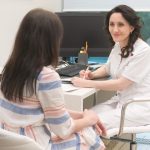5 Tips to tackle stress and burnout as a doctor
Feeling stressed and not ready to face another year of medical practice? You might be suffering from GP burnout.
In this article, we take a look at five tips to tackle stress, burnout and take the stigma out of doctor’s mental health and wellbeing.
The rise of GP burnout and depression
Doctors are becoming more prone to mental health problems than any other profession, and the stress is starting to take its toll.
Recent data shows that medical professionals are more likely to die by suicide than the general population — female doctors 2.2 times more, male doctors 1.4 times. Young doctors are at significant risk, with 20 per cent of trainees experiencing suicidal thoughts.
In Australia, a special report by Insight in 2017 investigated that among doctors, suicide rates are disproportionately high and mental illness is common.
In the UK, a report in the British Medical Journal in 2011 found that a third of doctors have a mental health disorder. And a Royal College of Physicians’ survey of junior doctors last year found that 70% worked on a rota that was permanently under-staffed, 80% felt their work put them under excessive stress, and a quarter felt it had a serious impact on their mental health.
Meanwhile in the UK, a report found found more than a thousand British GPs have sought professional help from the NHS GP Health Service since it was set up in 2017, with most cases involving stress, anxiety and depression and about 2% addiction.
In the US, a study by MedScape this year of 15,000 physicians from 29 specialties found 42 per cent were burnt out and 12 per cent reported colloquial depression.
Female doctors seemed slightly more likely to experience burnout, with forty-eight percent of women physicians reporting it compared to 38 percent of male physicians.
“I know what it’s like to really feeling under the pump, you’re running over time, the nurses are calling you, you have a waiting room full of people and an endless amount of admin to catch up on,” MedicalDirector’s Chief Medical Advisor and GP, Dr Charlotte Middelton says. “It can be really stressful and very hard to just calm down when you feel there is so much against you as a GP.”
1. Identify the signs
Signs of mental health, burnout and depression to look out for, according to the Royal College of Australasian of Physicians, include:
- Emotional exhaustion
- Cynicism
- Perceived clinical ineffectiveness
- Sense of depersonalisation in relationships with co-workers, patients or both.
“Historically, the medical professional culture has encouraged doctors to sacrifice their own health through accepted practices such as working long hours and taking work home,” the Royal College of Australasian of Physicians report states. “Increasingly efforts are being made to address counterproductive workplace behaviours, and workplace bullying is no longer tolerated.”
2. Identify the stressors
Taking the time to identify the key workplace stressors can help you start prioritising areas of your working day that could improve.
“GPs spend at least six hours a week on admin alone,” Dr. Middleton says. “There’s constantly some paperwork that needs filling in and I feel that instead of getting easier every year it is getting worse. And when you’ve done a back to back day of seeing patients, then you have to fit in hours of admin work, it can become very frustrating, tiring and stressful.”
Some common workplace conditions that can lead to not being able to ‘switch off’ and lead to a high-stress medical practice environment include:
- Lack of collaboration and communication within your practice
- Inefficient or outdated practice management workflow systems
- Slow/outdated operating systems or practice management software
- Patient no-shows or difficulty staying on top of busy appointment schedules
- Complex billing, insurance requests and payment processing
- Inadequate resources
“We all strive for that utopian moment where we’re feeling 100% present with our patients and not feeling rushed or stressed, but in reality, it’s easier said than done, because there can be so many pain points to the daily workflow,” Dr Middleton adds. “But in terms of what works, it’s not necessarily a one size fits all solution. It’s a hard one to tackle because we’re all so busy, and there’s so much pressure to see all your patients.”
3. Education about stress management
Lack of early support programs while at student level may be a contributing factor to the healthcare professionals’ struggle to cope with these issues of stress, says pharmacy body PDL NSW director, Curtis Ruhnau. He identified medical students are getting more training early on about workplace stress, while pharmacy students are missing out.
“I’ve tutored med students and first year med students are given a tutorial where they’re taught about workplace stress, the stress of being low on the totem pole, and not being able to do much about problems,” he says. “However, in a recent presentation I gave to 200-odd pharmacy students, about 20 had done some sort of mental health training, and of those, only two felt this training had prepared them for their own stress rather than dealing with someone else’s stress.”
“Our med students are getting this training in their first semester yet our pharmacy students are not getting this at all. I would love to see this change. I think it’s an idea whose time is well overdue”.
4. Be proactive in managing stress
Even if certain pressures are out your control, there can be even small, incremental changes you can implement to mitigate and manage stress.
According to Dr Middelton, while there’s a lot of buzz around doctors under stress, and putting a lot of pressure on themselves, she feels that implementing small, practical measures can make a big change to your daily workflow.
“It’s not just the patient load, but all the admin work that goes with it than can be difficult to manage and squeeze into the working day,” she explains.
For instance, Dr Middelton finishes a few hours early every Wednesday, so she has time to catch up on all her administrative tasks.
“If I didn’t make this small change to my workflow, I’d be working from home most evenings to catch up through remote access,” she says. “Now over time, that’s not healthy.”
Additional ways to curb workload stress include:
- Automating mundane tasks, to enable practice staff to tend to more complex matters
- Integrate EFTPOS transactions for fuss-free billing
- Using the latest clinical and practice management software to streamline workflow
- Updating all practice management software so it is running quickly and efficiently
5. Take a real mental break
“For a number of reasons, there is increased the pressure on GPs to see as many patients as possible in the working day, with little or no time to complete admin during these hours,” Dr Middleton says. “This has ultimately extended the working day drastically for GPs, and negatively impacted the work-life balance for practitioner.”
In order to feel more recharged, refocused and re-energised, Dr Middleton suggests taking the time to take a real mental break from being a practitioner. For her, this means not turning on her computer on weekends for work-related tasks, and spending quality time with family. Regular breaks and holidays are also key.
“It’s so important to take a complete break from the working week,” she adds. “And have regular holidays planned, so you always have something to look forward to. Even regular weekend getaways can give you that down time to help you recharge and be more energised to see your patients in the week.”
Tackling stress as a doctor – what can you do?
We speak to Dr Charlotte Middleton, GP and Chief Medical Advisor at MedicalDirector, about how she manages her stress levels in order to achieve a more healthy, balanced and productive outlook.
The art of mindfulness
According to Dr Middelton, there is a lot of research around the benefit of mindfulness, and just taking the time to try and be in the present moment.
“I know of studies that have gone into schools and workplaces, and done extensive research on the benefits of mindfulness and its positive impact on behavioural changes from childhood into adulthood,” she says. “I know it sounds like a bit of a buzzword, but there is actually a lot to it, especially when it comes to tackling the everyday stresses of being a doctor.”
For Dr Middleton, simple breathing exercises between patients really help bring her get back into the moment and to feel more focused for her next patient.
“I’ve really started doing this more regularly at the start of the day, between patients, or when I’m feeling rushed,” she says. “It’s about just taking that moment to close your eyes, breathe and be in the moment.” “It’s also a chance to tell myself, I’m doing the best I can!”
GP’s working part-time.
Dr Middelton, who splits her time as a GP in Wollongong and MedicalDirector’s Chief Medical Advisor, says she’s part of a growing pool of doctors who are now going part-time in order to gain more work-life balance.
“I was on a GP Facebook forum recently, where someone posted a question about how many GPs actually work full-time,” she says. “It was interesting because it was almost universal that no GP was working five days a week, and we were all doing other things as well with our time.”
“Most people were either mixing it up between practices, or between professional roles such as medical educator, advisory or supervisory roles, and doing perhaps three or four days a week in general practice to try and reduce their stress levels” she adds. “It really reflects how doctors are recognising that it’s a hard job to do full-time because it’s just too much, too stressful and simply too hard to keep up.”
Small changes can make a big difference
According to Dr Middelton, while there’s a lot of buzz around doctors under stress, and putting a lot of pressure on themselves, she feels that implementing small, practical measures can make a big change to your daily workflow.
“It’s not just the patient load, but all the admin work that goes with it than can be difficult to manage and squeeze into the working day,” she explains.
For instance, Dr Middelton finishes a few hours early every Wednesday, so she has time to catch up on all her administrative tasks.
“If I didn’t make this small change to my workflow, I’d be working from home most evenings to catch up through remote access,” she says. “Now over time, that’s not healthy.”









